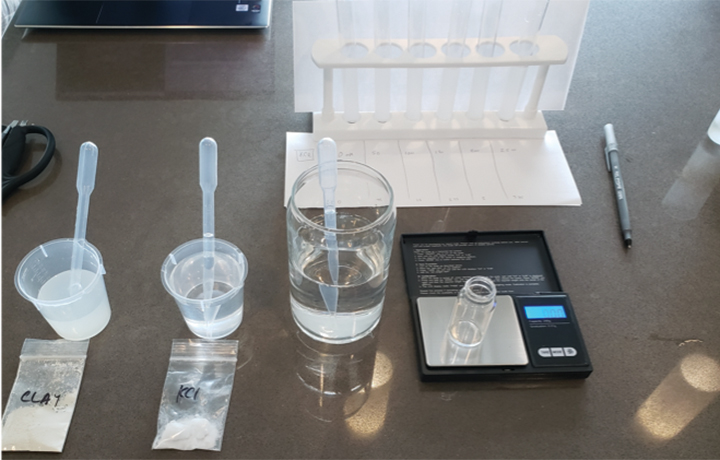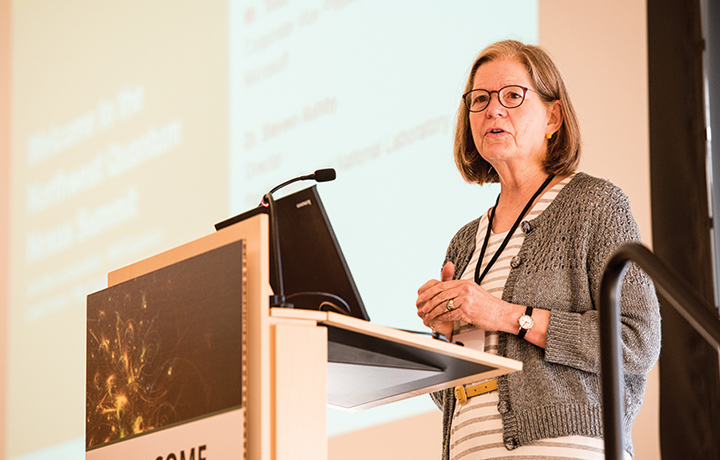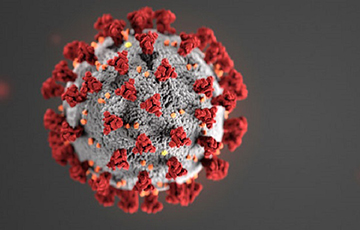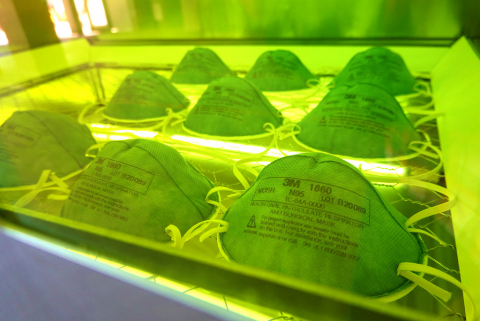December 10, 2020
March, as is wont to do, came in like a lion. More and more cases of a disease caused by a novel virus were cropping up in the greater Seattle area. At the UW, Spring Break was just a few weeks away, but on campus, excitement was replaced with trepidation.
When it became clear that we would be facing a shutdown of at least a few weeks, our staff went to work, proactively ordering necessary remote-work gadgets such as document cameras (“doc cams”) and comfortable call-center-style headsets. Faculty, staff, and TAs strove to become instant experts on something called Zoom.
On Friday, March 6, UW president Ana Mari Cauce made the call: starting the following Monday, classes for the rest of winter quarter would be conducted remotely. Labs and classrooms cleared out, and anyone who could work from home did. Depending on public health conditions, Cauce said, we would resume classes on campus in spring quarter.
But it soon became clear that wouldn’t be possible. In just two short weeks, ChemE rescheduled several classes, prepared to offer an entire quarter of remote instruction, reconfigured research assignments, and otherwise adjusted in order to keep more than 250 undergraduate and graduate students on track to earn their degrees. The department and university have been operating remotely for the most part ever since.
Here, we offer a glimpse into our year of reinvention.
-------
After the abrupt shift to online classes in the spring, instructors set about making “virtual” a feature not a bug. Here are some of their strategies.
- There’s more than one way to give a lecture
- Faculty use different presentation methods to ward off “PowerPoint fatigue.” For example, doc cams simulate writing on a blackboard, and Jupyter Notebooks display code and equations that can be edited in real time.
- Keep it interactive
- Real-time polls help keep students engaged and give instructors feedback about comprehension. Breakout rooms encourage collaborative problem solving.
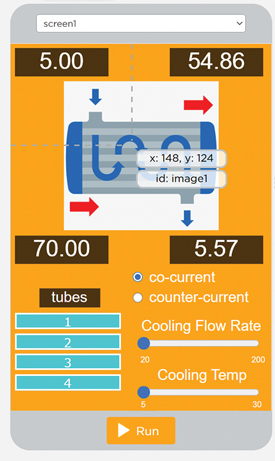 Create new "remote-friendly" tools
Create new "remote-friendly" tools- This heat exchanger simulator is one of several apps that lecturer Chad Curtis developed to demonstrate statistical and design concepts in his remotely-taught courses. He expects to continue using the apps when classes meet in person again.
- Offer avenues for extra help
- Through Zoom, students can ask TAs questions via chat during lectures without feeling self-conscious or worrying about interrupting. Maria Politi, a TA in spring quarter, said she provided answers and clarifications in real time, and passed along common questions to the professor to answer for the whole group. Some classes maintain a Slack channel to keep conversations going outside of class. Many instructors also note higher attendance at virtual office hours than at in-person ones. However, one drawback in the virtual space, professor Brad Holt noted, is that it’s harder to help students when you can’t see how they’re working through a problem on a piece of paper. “You want to see what they were thinking,” he said. “Then you can point out what to change, and that helps them learn.”
- Support students even more
- Students are adjusting to new technologies, studying in distracting environments, and missing out on study groups in Benson. The ChemE Advising Team went the extra mile to connect students with valuable resources: the UW Student Technology Loan Program, options for safe study space on campus, and how to get emergency financial aid, to name a few. Advisers moved sessions online and built out a comprehensive, user-friendly resources web page. In class, students felt supported when professors adapted workload and due dates in response to the challenging circumstances. “I think students noticed that the professors cared about them and not just the content of the class,” said spring TA Maria Politi.
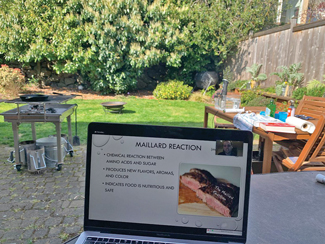 Embrace "work from home"
Embrace "work from home"- Lilo Pozzo co-taught Kitchen Engineering — remotely — for freshmen in the spring. Here, she takes advantage of balmy weather and a backyard grilling setup to demonstrate the Maillard reaction.
- Don't forget professional development
- Internship opportunities are harder to come by, and students are seeking a competitive edge as they prepare to enter a tough job market. Fortunately, guest lectures work quite well in the Zoom setting; professionals in a variety of sectors can easily jump into a virtual classroom to speak with students about their experiences. ChemE will also offer undergraduates three industry-sponsored capstone projects — with Membrion, Sironix, and Talking Rain — in winter and spring quarters (remotely). Senior Ben Sorochuk managed to take advantage of remote learning to complete a co-op with Marathon Petroleum while simultaneously taking classes. Though it’s a lot of work, he reclaimed at least two hours each day by not having to commute to campus, and he uses asynchronous learning options so that work and class schedules don’t conflict.
- Continuously improve
- A group of faculty and advisers met regularly over the summer to debrief on virtual courses in the spring and discuss how to improve for the fall. One key recommendation they made for subsequent courses was to offer an asynchronous element (e.g. recorded lectures) for students to reference later. Students stand to benefit, since many face challenges keeping regular schedules, some are in different time zones, and all may like to go back and hear about a concept they missed the first time around.
-------
Try this at home
The Unit Operations and Surface & Colloid Science labs go remote. Read more >>
How researchers returned to campus safely amid the pandemic
ChemE professor and UW vice provost for research Mary Lidstrom sat down (virtually) with UW News in June to discuss the evolving picture of research at the UW. Read more >>
Developing a first-of-its-kind antibody test
Professor James Carothers and colleagues are working on a CRISPR-based platform that could potentially be used as part of a point-of-care diagnostic. Read more >>
N95 decontamination for first responders
As part of UW’s Engineering Innovation in Health program, professor Jonathan Posner is building and distributing boxes that decontaminate masks with UV light. Read more >>
 Create new "remote-friendly" tools
Create new "remote-friendly" tools Embrace "work from home"
Embrace "work from home"